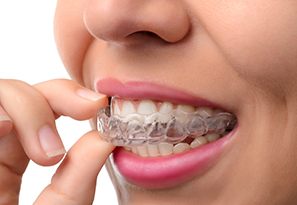(720) 638-6114
Mon & Fri: 8-2; Tue-Thurs: 9-5

Common Questions
A+ A- A Main ContentA soft bristled brush is recommended, instead of a medium or hard bristle brush, which can damage your enamel and your gums. For children, it’s important to make sure the head of the brush is small enough to be able to get around all the back molars more thoroughly. Letting your child help pick his or her own toothbrush, maybe in a favorite color or featuring a favorite character, is a great way for them to feel more involved and enthusiastic about their oral hygiene.
Flossing removes plaque and bacteria that lives between the teeth where it’s almost impossible for a toothbrush to reach. Skipping the floss can contribute to gum disease, which is detrimental to your child’s overall health. Once your child’s teeth start to fit more closely together, usually between the ages of two and six, you should start teaching your children to floss daily.
It’s recommended that your child visit their dentist at least every 6 months. Even with perfect oral hygiene, plaque cannot be thoroughly and completely removed without professional help, and our knowledgeable hygienists can catch any problems early on.
When should my child first see the dentist?
Your child should begin visiting the dentist by their first birthday or by the eruption of their first tooth, whichever comes first.
Symptoms of gum disease include: receding gums, consistent bad breath, spaces beginning to form between teeth, red or bleeding gums, and/or loosening teeth. Gum disease is often painless in the beginning stages, so it is crucial to bring your child in for regular dental exams. If you think your child has any of the above symptoms, schedule an exam as soon as possible.
There are some concerns about silver-colored fillings or amalgam fillings because amalgams contain the toxic substance mercury. A number of individuals believe these fillings can cause certain diseases, including autism, and multiple sclerosis.
The American Dental Association (ADA), the FDA, and numerous public health agencies say amalgams are safe, and that any link between mercury-based fillings and disease is unfounded. However, if amalgam fillings still cause you concern, there are many other solutions. Please be sure to let your dentist know of any concerns you may have and you will be provided with other options.
The dose of radiation your child is exposed to during a dental X-rays is incredibly small. The radiation your child is exposed by the sun, minerals in the soil and appliances in your home within a year, is 20 times more radiation exposure than a dental X-ray. Please discuss any concerns you may have with your dentist.
Our Location
Blog Articles
We care about creating great smiles for kids, and teens. Follow us on our blog to review trending topic and resources in the dental industry and related healthcare.
Dec 8, 2025Teething is a normal developmental milestone, but that doesn’t make it easy for infants or parents. The eruption of new…Nov 24, 2025Teenagers face a unique set of dental challenges as they transition from childhood to adulthood. From new dietary habits to…Nov 10, 2025Establishing excellent oral hygiene habits early is one of the most valuable gifts parents can give their children. The…
Hours:
Monday & Friday: 8:00 AM - 2:00 PM
Tues, Wed, Thurs: 9:00 AM - 5:00PM
Closed: Select Mondays and Fridays












